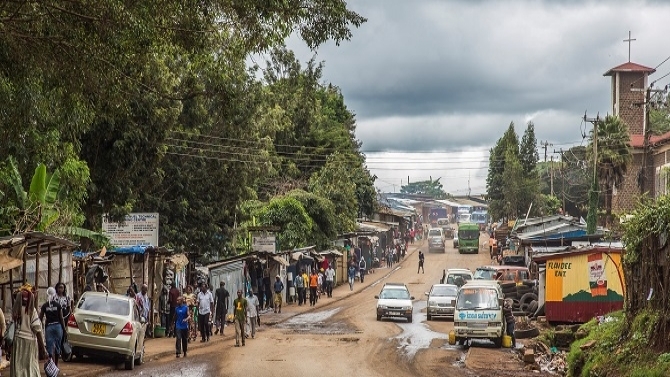Achieving the Sustainable Development Goals to end extreme poverty by 2030 will require about $4.5 trillion annually, far more than multilateral development banks or donors can provide by themselves. To face this challenge, the World Bank Group adopted the MFD approach, which entails working with governments to crowd in the private sector while optimizing the use of scarce public resources. This approach is guided by the Hamburg Principles adopted by the G20 in 2017 and builds on the substantial experience across the institution.
Kenya is developing programs to foster private sector participation in infrastructure investments to help address the funding gap in the sector. The World Bank Group has provided $90 million to kick-start Kenya’s public-private partnership (PPP) programs. This has resulted in a new PPP law, stronger government capacity to manage PPPs, and a solid pipeline of projects in roads, health, and water and sanitation that will advance Kenya’s social and economic goals.
Development Challenge
Kenya faces a significant infrastructure financing deficit estimated at $2.1 billion annually, which constrains growth and development. Sustained expenditures of almost $4 billion per year will be required to meet the country’s infrastructure needs. With public debt standing at 57 percent of GDP, this deficit cannot be met by public resources. The country needs to mobilize the private sector and local currency to finance infrastructure needs. The World Bank Group estimates that increasing infrastructure financing could improve Kenya’s per capita growth rate by three percentage points.
The MFD Approach
Building on successful experiences in its energy sector, the government is committed to mobilizing private investment in infrastructure with PPPs representing one avenue for doing so. The World Bank Group is providing a comprehensive approach that will lead to a pipeline of bankable projects that do not overtly add to fiscal commitments and contingent liabilities. The support also builds the capacity of local institutional investors to invest in infrastructure through capital market vehicles. Additional measures, such as risk guarantees, will also be supported to encourage investor participation.
Setting Up the Regulatory and Institutional Framework
A World Bank $40 million IDA loan in 2012 helped establish a PPP law and build government capacity to manage PPPs. Kenya now has a PPP unit and committee that manages projects in line with regulations and assesses their fiscal risks and contingent liabilities. They set up local PPP practices at the county level, and an associated capacity-building program has trained more than 200 people. The loan also helped create a robust multisector pipeline of PPPs that could be financed by the private sector and enable economic growth and employment creation. A second loan of $50 million in 2017 is supporting the development of local PPPs and a project facilitation fund to finance viability gaps. This will make projects more attractive to private investors and act as a liquidity reserve for contingent liabilities.
The PPP Program
The Kenyan government identified projects suitable for a user-payer approach where revenues can be used to service the debt raised by the private sector to undertake the project. The World Bank Group is helping to bring the first highway PPP to the market and mobilizing domestic institutional investors. This transaction provides a focus for investors and allows the development of standards so that others can follow. IFC and MIGA are in discussion with prequalified bidders to support the Nairobi-Nakuru-Mau Summit Highway project, which aims to widen an existing 175-kilometer stretch of road from one to two lanes each way. This road is critical for the Kenyan economy as a vital trade corridor in East and Central Africa, and the main gateway to the coast for Kenya’s landlocked neighbors. Once completed, the highway is expected to not only reduce current travel time from Nairobi to Mau Summit by about half, but also significantly improve safety and mobility for the six million people directly served (and 19 million indirectly) by this stretch of road—currently one of the world’s most dangerous in terms of fatalities.
For this transaction, the World Bank is preparing an IDA guarantee to backstop certain government payment obligations and protect commercial lenders. The guarantee aims to enhance funding prospects, including crowding in local institutional investors to provide long-term, local currency financing—which reduces the risk inherent to short-term local currency or long-term foreign exchange and provides a new investment for domestic savers.
The World Bank is also providing a technical assistance program on infrastructure finance that will enable Kenya to use local currency financing from institutional investors through the capital markets and, in turn, create a fiscally sustainable way to finance PPPs. IFC may provide seed capital to establish such capital market instruments, building on a similar experience in Colombia. The infrastructure finance program builds the capacity of financial regulators, pension funds, and insurance companies to invest in PPPs using long-term debt instruments since the long-term liabilities of institutional investors match the life span of such projects.
Making a Difference
Kenya’s ongoing commitment to improve private participation in infrastructure financing has improved the regulatory climate and generated a pipeline of 69 PPPs. Of these, 11 are in the procurement stage with signed contracts. Feasibility studies and transactional advisory support are underway, including for the Nairobi-Nakuru-Mau Summit Highway and other high-impact projects in student housing, health, water, and sanitation. An estimated $10.4 billion in private investments is expected to be mobilized for some of these early projects. Efforts to attract financing from local pension funds and insurance companies are underway, and include potential partnerships with international investors. The program has opened opportunities to develop Kenya’s capital markets and local currency financing for infrastructure assets.
